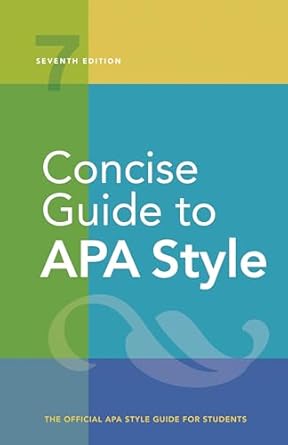[toc]
copyright permissions apa style guide explained
Concise Guide to APA Style: 7th Edition (OFFICIAL)
Page 227 Review
Understanding Copyright and Permissions: A Deep Dive into APA Style
Navigating copyright laws and permissions can be a daunting task, especially when incorporating materials from other sources into your work.
The APA Style guide provides crucial guidelines on how to properly attribute and, when necessary, seek permission for using copyrighted content.
This commentary delves into the intricacies of these guidelines, drawing heavily from the APA Style manual to clarify the distinctions between attribution and permission.
General Guidelines for Reprinting or Adapting Materials
According to the APA Style guide, simply citing a source with an author-date in-text citation and a reference list entry might not always suffice. “Most of the time, authors need to provide only an author-date in-text citation and a reference list entry to properly credit the words or ideas of other authors.” However, U.
S. copyright law mandates a more detailed acknowledgment when reprinting or adapting certain types of works.
This acknowledgment comes in the form of a copyright attribution.
A copyright attribution is “a brief statement providing details of the original work and naming the copyright holder.” This is crucial for works such as figures published in journal articles, images from websites, and lengthy quotations.
The APA Style manual emphasizes that “reprinting means reproducing material exactly as it appeared originally, without modifications, in the way in which it was intended to be understood.” On the other hand, “adapting refers to modifying material so that it is suitable for a new purpose.” Both reprinted and adapted works require a copyright attribution, supplementing the usual reference list entry.
Attribution vs.
Permission: Knowing the Difference
The key distinction lies between attribution and permission.
Attribution involves giving credit to the original source through a copyright attribution.
Permission, however, is a more formal process of obtaining explicit written consent from the copyright holder to use their material.
The APA Style guide clarifies, “For a subset of cases (see Section 8.38), authors also need to seek and obtain explicit written permission from the copyright holder to reprint or adapt the material.”
Obtaining permission can be a time-consuming endeavor with no guarantee of success. “This process can take substantial time and comes with no guarantee that the copyright holder will consent to the use.” Therefore, it’s essential to understand when permission is required and to start the process well in advance of your publication deadline.
It’s also important to remember that these policies are rooted in copyright law, not just APA Style. “These policies are a matter of law, not specifically of APA Style, and writers, including students whose work will not be formally published, should follow them.” This means adherence is essential, regardless of whether your work is intended for formal publication.
Materials Requiring Copyright Attribution (and Possibly Permission)
The APA Style guide provides specific examples of materials that often necessitate a copyright attribution, and potentially, permission. “The following are examples of materials that authors often want to reprint or adapt that may require a copyright attribution; they may also require permission (see Section 8.38).” These include:
Figures, tables, and other images: “Most types of visual displays require a copyright attribution to reprint or adapt, including tables and figures published in journal articles, books, reports, webpages and websites, and other works, as well as images from the internet such as illustrations, infographics, photographs, screenshots, and most clip art.”
The guide specifically addresses the complexities of using images found online. “Copyright ownership and permission status can be particularly difficult to establish for images downloaded from the internet, but it is still necessary in most cases to check the status.” Even seemingly freely available images may be subject to copyright restrictions.
Navigating the Complexities
In summary, understanding copyright and permissions under APA Style involves a careful evaluation of the material you intend to use.
Always determine if the material is being reprinted or adapted.
If so, provide a copyright attribution.
Furthermore, assess whether explicit written permission from the copyright holder is needed.
This often depends on the type of material and its copyright status.
While determining copyright ownership and permission status for online images can be challenging, it is a necessary step.
By adhering to these guidelines, writers can ensure they are using copyrighted material responsibly and legally.
Buy full ebook for only $18: https://www.lulu.com/shop/american-psychological-association/concise-guide-to-apa-style-7th-edition-official/ebook/product-rmzpq54.html?page=1&pageSize=4

